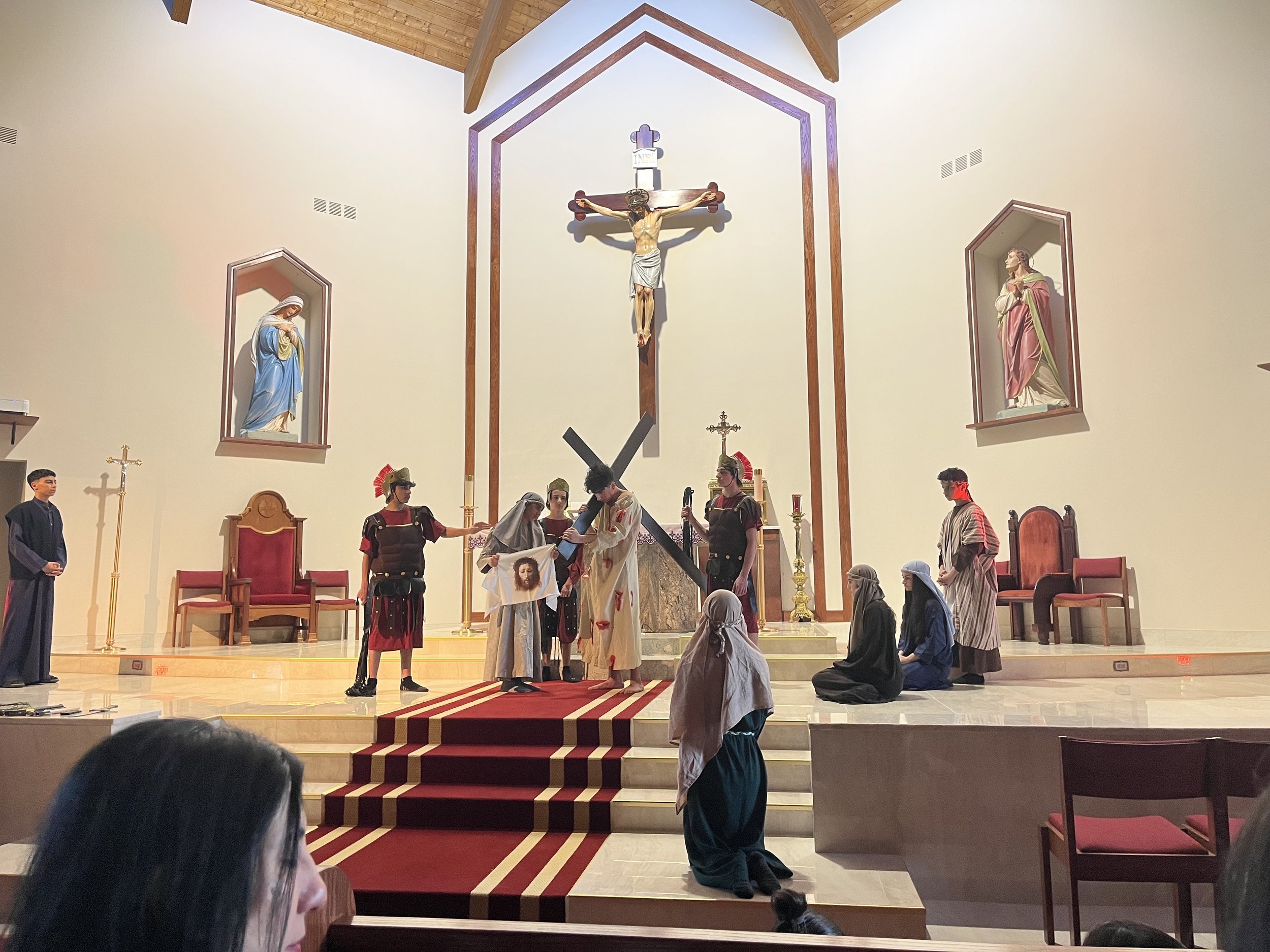Beyond Easter
The passion play as a living legacy of faith and humanity
By Jenna Abro
Like clockwork, every Easter season like the one we just celebrated, Christian communities around the world are reminded of the ultimate sacrifice Jesus Christ made to absolve humanity of its sins.
This remembrance lives on through traditions that stretch across centuries: fasting through Lent, folding palm crosses on Palm Sunday, observing the somber rituals of Good Friday, and rejoicing in Christ’s resurrection on Easter Sunday. But one of the most impactful ways the story is told during Holy Week is through the retelling of The Passion of the Christ—the account of Jesus’s suffering, crucifixion and death as recorded in the New Testament.
As Catholics, we’ve known this story for as long as we can remember. From childhood catechism classes to adult liturgies, the Passion is woven into nearly every religious gathering throughout the year. Yet it’s during Easter that the story takes center stage. So why is this specific retelling so significant during this time?
Across our Chaldean and broader Christian communities, parishes bring the Passion to life in meaningful ways. Some host screenings of Mel Gibson’s 2004 film The Passion of the Christ, notable for being filmed in Aramaic, the historic language of Jesus. Others present live performances, often acted out by members of the congregation or youth groups. Churches like St. George Chaldean Catholic Church in Shelby Township and Mart Mariam Assyrian Church of the East in Warren host dramatic reenactments that draw large crowds of parishioners seeking to relive the emotional journey of Christ’s final days.
I remember participating in these performances myself during my time in catechism at St. Joseph Church. Our youth leaders would help us prepare to act out scenes of the Passion, sometimes with great detail and emotional intensity. Those moments left lasting impressions on many of us and shaped how we understood the meaning of Easter.
During Holy Week, priests often base their homilies on Jesus’s final days—His suffering, betrayal, crucifixion, and the promise of resurrection. Churches like Sacred Heart Chaldean Catholic Church in Warren and Holy Martyrs Church in Sterling Heights dedicate specific services to reflect on the Passion, offering moments for contemplation and spiritual renewal.
So why do we come back to this story every year?
To understand Christ, we must understand His suffering—the lengths He went to redeem us. His crucifixion was not just a historical event; it was the ultimate demonstration of divine love. The Passion narrative, told across the Gospels of Matthew, Mark, Luke and John, walks us through the final hours of Jesus’s life: from the Last Supper, to His prayers in the Garden of Gethsemane, His betrayal and arrest, unjust trials, brutal torture, crucifixion, and ultimately, His death and burial before His resurrection.
Each gospel adds a unique lens to these events, enriching our understanding of Christ’s mission and sacrifice. What emerges is a profound expression of love and grace—the willingness of a sinless man to suffer and die so that others might live.
Even while being tortured and humiliated, Jesus remained full of compassion. As He hung on the cross, He uttered, “Father, forgive them, for they do not know what they are doing” (Luke 23:34). In this moment, we see the essence of Christian faith: radical forgiveness, unconditional love, and selfless sacrifice.
His suffering reminds us of the depth of God’s mercy, and His death paved the way to salvation. God’s sacrifice—offering His only Son—reveals the extent of His commitment to humanity. As the Gospel of John tells us, Jesus is “the Good Shepherd” who lays down His life for His flock (John 10:11–14). And in Hebrews 13:20, He is called “the great shepherd of the sheep,” who sealed a new covenant through His blood.
For many believers, reflecting on the Passion is a deeply personal experience. It invites us to contemplate the meaning of faith, forgiveness and purpose in our lives. Personally, I often find humility in the image of Christ enduring such pain, and yet offering mercy. In His suffering, I discover the purest example of love and grace. His Passion isn’t just a story of death—it’s a story of life, rebirth, and redemption.
Many people choose to devote their lives to their faith in response to Jesus’s unwavering commitment to us. Learning about the Passion is more than an annual ritual—it is a lifelong lesson in how to live with purpose, humility and compassion.
But in today’s fast-paced world, our religious holidays can sometimes feel like a blur of food, family gatherings, and commercial celebrations. While those joyful moments are valuable, we must not forget the true meaning of the Easter season.
Easter is the most important holy day in Christianity—a celebration not only of Christ’s resurrection, but of the salvation it brings to us all. Reenactments, films, liturgies, and scripture readings help ground us in the spiritual essence of this sacred time.
So amid the springtime festivities, take a moment to slow down. Reflect on the blood that was shed, the cross that was carried, and the love that was given freely. In doing so, we humble ourselves before God and recommit to leading lives that reflect His grace.
The Passion of the Christ is not just a biblical narrative. It’s the foundation of our faith—and a living reminder that redemption is always possible through love, sacrifice, and the unending mercy of our Savior. It’s also something we should reflect on all year round.

